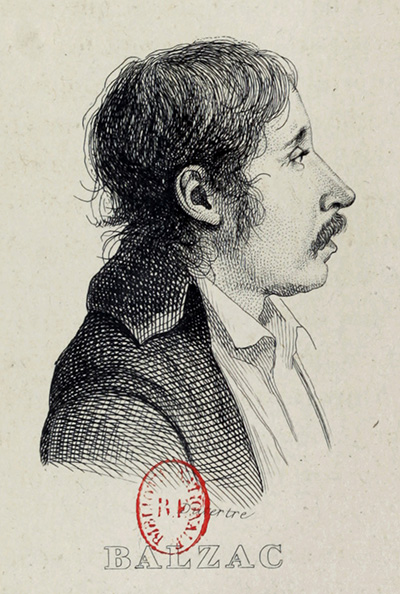
Balzac at 46 years old, drawn by Dutertre
Charles-Louis Balzac (1752-1820), an architect and member of the Commission des Sciences et des Arts, made a major contribution to the Description de l’Égypte. He produced architectural drawings of the mosques of a Thousand Columns and of Saint Athanasius, as well as the courtyard of Qaitbay Fort and the Tower of the Romans. He also drew some of the towers on the city wall and took part in the surveys of the obelisk and Pompey’s Pillar. After two months in Alexandria, he left for Cairo, where he sketched a view of the Great Pyramid and was part of the Costaz commission that explored Upper Egypt.
Tower of the Romans – Ottoman houses – Mosques
DE, Antiquités, Planches, tome 5, pl. 33, 34, 35, 37, 38, 39
DE, État moderne, Planches, tome 2, pl. 87, 88, 90, 99, GG, II, LL, MM
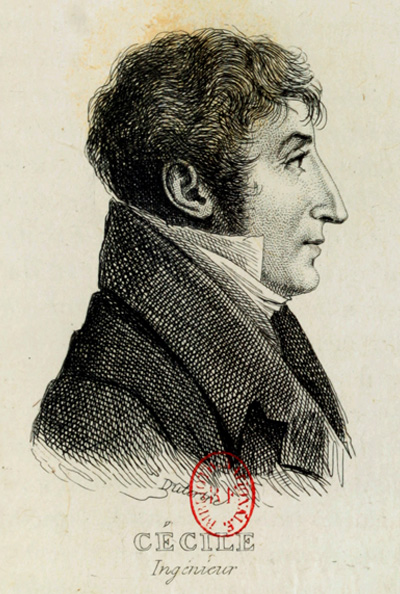
Cécile at 32, drawn by Dutertre
Born in Paris in 1766, François-Charles Cécile briefly studied architecture and began a career as an artillery engineer. In 1797, he entered the Conservatoire des Arts et Métiers as an auxiliary draughtsman. The following year Conté chose him to take part in the Egyptian Expedition as a mechanical engineer. On his return, he played a major role in the Description de l’Égypte, to which he contributed a large number of drawings. When the collection was first published in 1809, it referred to him as “architecte, professeur de dessin aux Arts et Métiers”.
Cleopatra’s Needles – Bazaars and streets
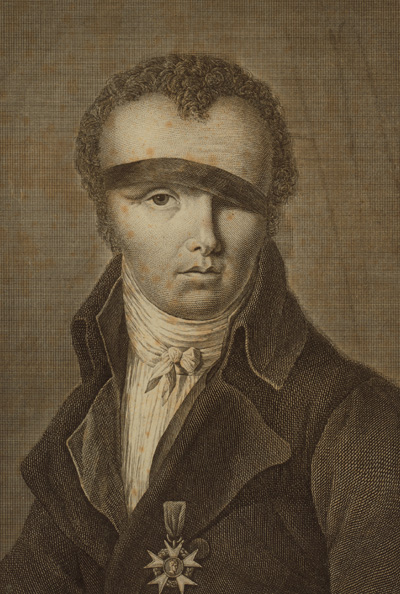
Conté 44 years old, drawn by Roehn
Nowadays best known for inventing the pencil, Nicolas-Jacques Conté (1755-1805) was a painter, physicist and chemist, and a remarkable inventor. A laboratory explosion cost him his left eye. After the loss of numerous instruments, devices and weapons caused by the shipwreck of the Patriote, Conté was able to help out the Army of the East by building numerous workshops to manufacture all the necessary products and tools. He was also a keen observer of the crafts and trades in Egypt at the time. On his return to France, he was put in charge of printing the Description de l’Égypte and invented an engraving machine that made it easier to create backgrounds and skies.
Cleopatra’s needles – Cemeteries and mausoleums – Bazaar and streets –
Topography of the town
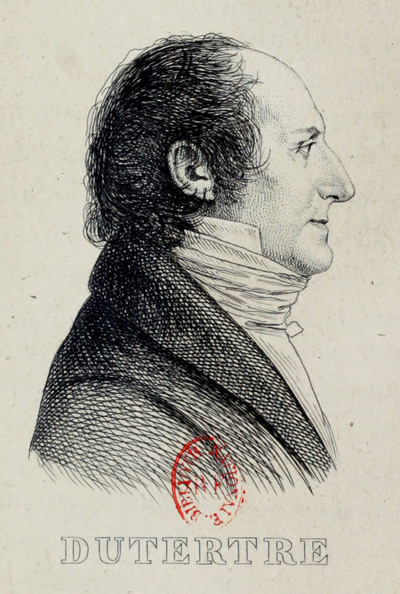
Dutertre at 45 years old, self-portrait
André Dutertre (1753-1842) joined the Commission des Sciences et des Arts as portrait painter for the Egyptian Expedition. He produced 184 portraits of scientists and officers, as well as portraits of Egyptians, both famous and unknown. Curious, prolific and remarkably meticulous, he also produced panoramas and drawings of ancient and contemporary artefacts, perfectly fulfilling his mission of documenting a country that he absorbed with passion. In Cairo, he set up a theatre and founded a drawing school for Egyptians within the Institut d’Egypte, of which he was a member.
Alexandrian portraits – Topography of the town
DE, État moderne, Planches, tome 2, pl. C, D, E, F, I, GG, II, KK, LL, MM
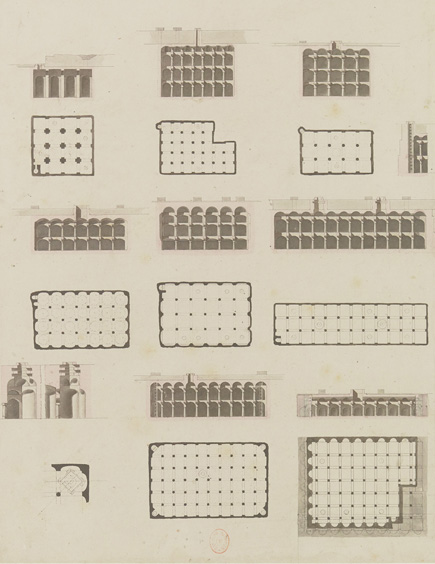
Faye at 35 years old on his arrival in Alexandria
Hervé-Charles-Antoine Faye (1763-1825) was an engineer with the public works department (bridges and highways). Particularly interested in water systems, he was a member of the commission responsible for the hygiene of Alexandria and its urban piping. He also conducted engineering work on canals, located and inspected cisterns, and studied water machines. He drew several towers within the city walls and the plan an underground monument with Martin. Faye also carried out a survey of the Fayum in collaboration with Jomard. He took part in the publication of the Description de l’Égypte, for which he provided 27 drawings.
Cisterns – Hammams – Wardian Tomb
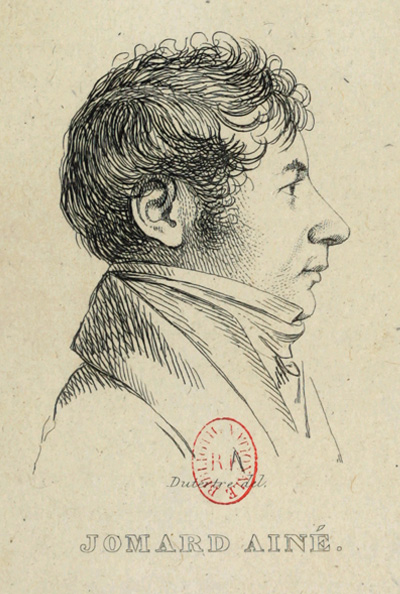
Jomard at 22 years old, drawn by Dutertre
A student of the Ecole Polytechnique and a cartographer, Edme-François Jomard (1777-1862) joined the Expedition with his younger brother, Jean-Baptiste. During the summer of 1798, he took part in the survey of Alexandria and became interested in the fortifications of the port city. On his return to France, he drew up a catalogue of hieroglyphs and was the driving force behind the publication of the Description de l’Égypte. In 1838, he became curator-administrator of the Royal Library (later BnF), where he deposited a file of preparatory drawings, some of which we present here.
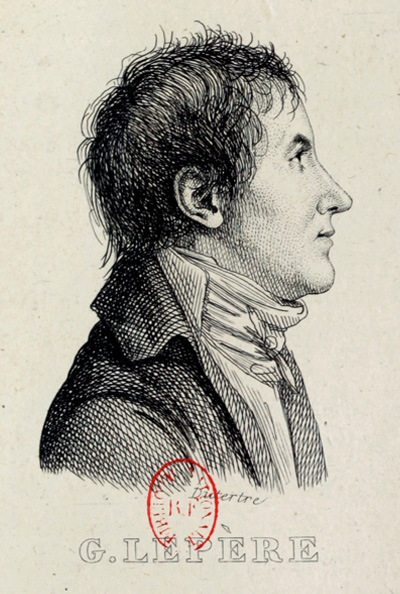
Gr. Le Père at 29 anyears olds, drawn by Dutertre
Gratien Le Père (1769-1826), engineer with the public works department (bridges and highways) and former classmate of Bonaparte at the Brienne Military Preparatory School, was the author of the “Mémoire sur la ville d’Alexandrie” (Description de l’Égypte, État moderne, Vol. 2), a key document in the study of Ottoman Alexandria. He drew up the “Carte générale des côtes, rades, ports, ville et environs d’Alexandrie” (Description de l’Égypte, Antiquités, Planches, Vol. 5, pl. 31). He also wrote the “Mémoire sur la partie occidentale province de Bahyreh, connue anciennement sous le nom de nome maréotique” (Description de l’Égypte, État moderne, Vol. 2). Finally, he took part in the levelling operations directed by his brother Jacques-Marie.
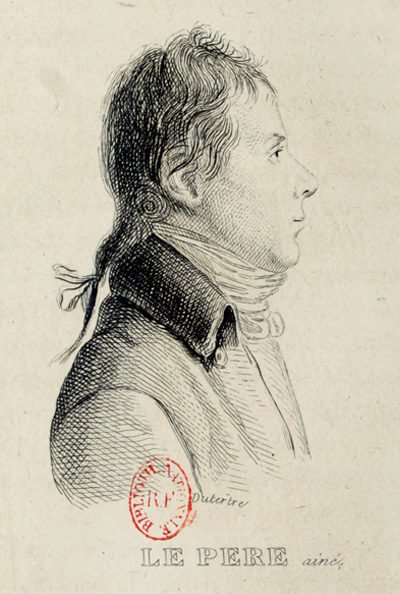
J.-M. Le Père at 35 years old, drawn by Dutertre
The elder brother of Gratien and Noël-Hyacinthe, Jacques-Marie Le Père (1763-1841) was chief engineer, director general of the Bridges and Highways Department and member of the Institut d’Égypte (mathematics section). He coordinated the topographical survey operations in Alexandria and presented the plan of the city and its ports to the Institut on 12 October 1798. He was responsible for the three levelling campaigns along the ancient canal that joined the Red Sea to the Nile (1799) and was the author of the “Mémoire sur la communication de la mer des Indes à la Méditerranée” (Description de l’Égypte, État moderne, Vol. 1).
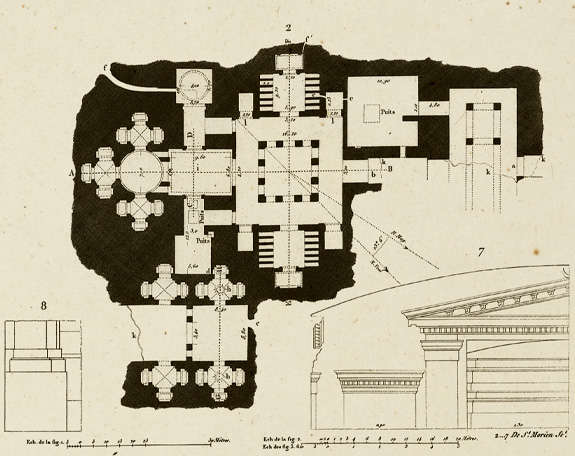
Martin a 27 ans à son arrivée à Alexandrie.
Pierre-Dominique Martin (1771-1839), an engineer with the Bridges and Highways Department, is best known for his memoir “Notice sur un grand monument souterrain, à l’ouest de la ville d’Alexandrie”, the first detailed description of an Alexandrian tomb, written on the eve of his abandoned return to France in December 1799. In 1800-1801, he spent more than six months exploring the Fayum.
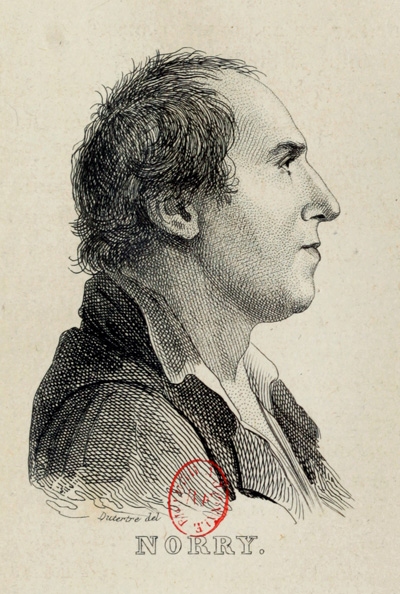
Norry at 42 years old, drawn by Duterte
Born in Conflans-Charenton in 1756, Charles Norry studied at the Royal Academy of Architecture. A product of the neoclassical movement, Norry was one of four architects attached to the expedition. In 1798, he surveyed several of Alexandria’s monuments. In October of the same year, Norry obtained permission to return to France. The following year, he published Relation de l’expédition d’Égypte, suivie de la description de plusieurs des monuments de cette contrée, et ornée de figures, Paris, Year VII (1799).
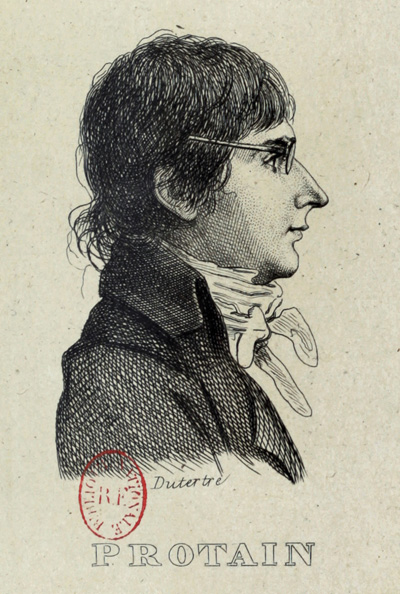
Protain at 29 years old, drawn by Dutertre
Jean-Constantin Protain (1769-1837) was an architect appointed to the Institut d’Egypte on 21 January 1800 in the literature and arts section. He was a close friend of Kléber and was with him when the latter was assassinated in Cairo on 14 June 1800: Protain was himself wounded. On his return to France, he prepared a large number of plates for the Description de l’Égypte.
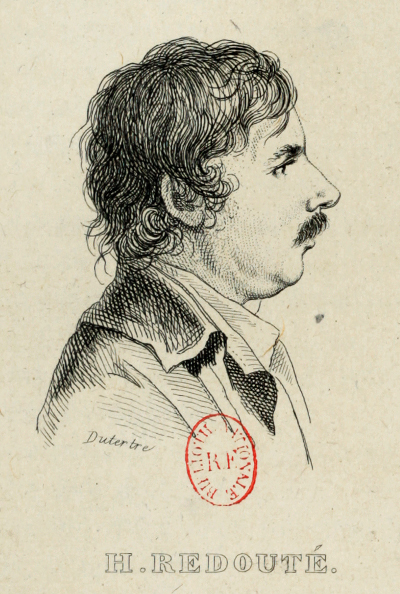
Redouté at 32 years old, drawn by Dutertre
Henri-Joseph Redouté (1766-1852) was a member of the team of painters at the Paris Natural History Museum and a member of the Commission des Sciences et des Arts. During the expedition, he kept a travel diary in which he described the city of Alexandria in detail, with its monuments, markets and houses. Redouté also took part in the survey of the fallen obelisk and made architectural drawings of an Ottoman house. He was also interested in vases and furniture, as well as fish from the Nile.
Ottoman houses – Bazaars and streets
